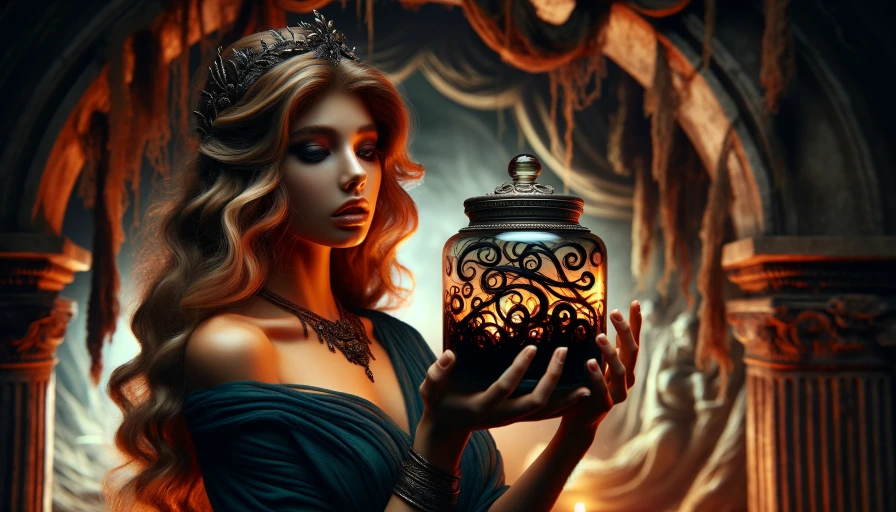In Greek mythology, the muses were divine beings who inspired creativity and the arts. They were believed to possess divine inspiration and prophetic abilities, and were revered for their transformative influence. The muses played a significant role in various creative aspects, including religious hymns, lyrical poetry, dance, and music. Their influence spanned from guiding the creation of artistic expressions to inspiring generations of artists. Polyhymnia, the muse of religious hymns, lyrical poetry, dance, and music, is the focus of this article.
Key Takeaways:
- What Is A Muse In Greek Mythology
- Greek Muses and their role in inspiring creativity
- The transformative influence of the muses in Greek culture
- Polyhymnia as the muse of religious hymns, lyrical poetry, dance, and music
- The impact of the muses in shaping artistic expression
The Origins and Lineage of Polyhymnia
Polyhymnia, the daughter of Zeus and Mnemosyne, holds a significant place in Greek mythology. As one of the Greek goddess muses, Polyhymnia is revered for her connection to creativity and intellect. She is known for her profound role in inspiring and guiding artists, writers, and musicians throughout history.
According to ancient mythology, Polyhymnia played a crucial part in the creation of the lira, a beautifully melodic musical instrument. Her gift of music and poetic inspiration resonated deeply with the artistic souls of ancient Greece, leaving a timeless legacy that continues to inspire generations to this day.
Polyhymnia’s divine parentage adds to her significance in the pantheon of Greek gods and goddesses. Her father Zeus, the king of gods, bestowed upon her a lineage of immense power and influence. With Mnemosyne, the personification of memory, as her mother, Polyhymnia possesses a deep connection to the arts and the rich tapestry of human history.
Exploring the origins and lineage of Polyhymnia provides valuable insight into the intricate web of Greek mythology and the enduring fascination with the muses. To truly delve into the essence of this powerful muse, it is essential to understand her heritage and the impact it has had on the artistic world.
The Role and Influence of Polyhymnia
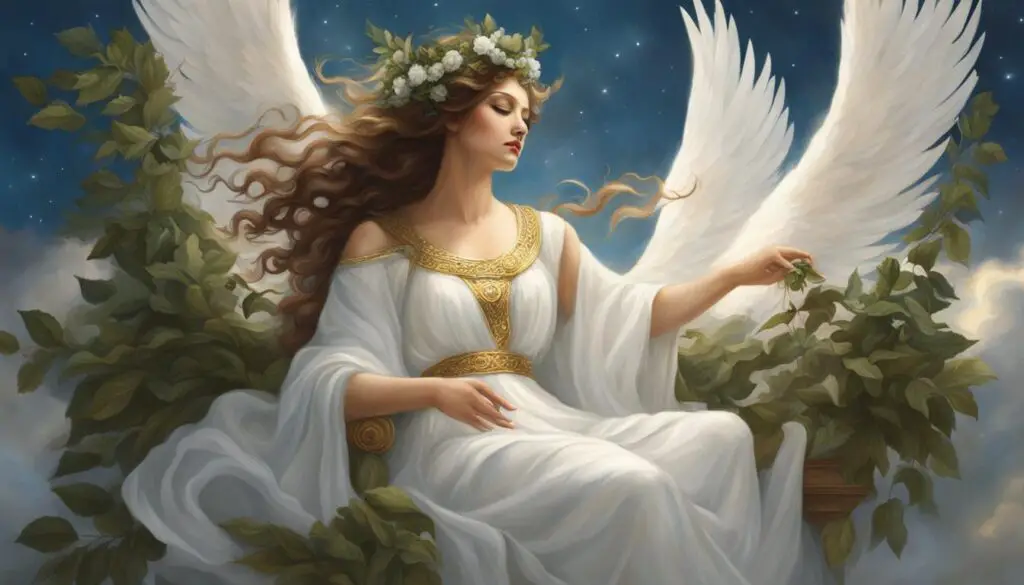
Polyhymnia, one of the prominent figures among the Greek Muses, played a pivotal role in inspiring and guiding various artistic expressions. Her influence spanned across multiple domains, leaving a lasting impact on Greek culture.
1. Muse of Religious Hymns
Polyhymnia held a significant role as the muse of religious hymns. With her divine inspiration and guidance, she nurtured and inspired hymn writers, infusing their compositions with sacred meaning and beauty.
2. Inspiration for Lyrical Poetry
As the muse of lyrical poetry, Polyhymnia enthralled poets with her ethereal touch. Her presence served as a wellspring of creativity, infusing verses with sublime imagery, profound emotions, and a touch of heavenly charm.
3. Guiding Dance and Music
Polyhymnia’s influence extended beyond hymns and poetry. She guided dancers in their movements and musicians in their compositions, bestowing upon them a sense of rhythm and grace. Through her ethereal presence, she elevated performances, allowing artists to tap into their creative depths.
*Image: Polyhymnia – Muse of Religious Hymns, Lyrical Poetry, Dance, and Music*
Polyhymnia’s multifaceted influence encompassed a wide range of artistic expressions, inspiring generations of artists to pour their souls into their craft. Her presence in Greek culture continues to shape and inspire creative endeavors, showcasing the profound impact of the muses in Greek mythology.
References to Polyhymnia in Classical Literature
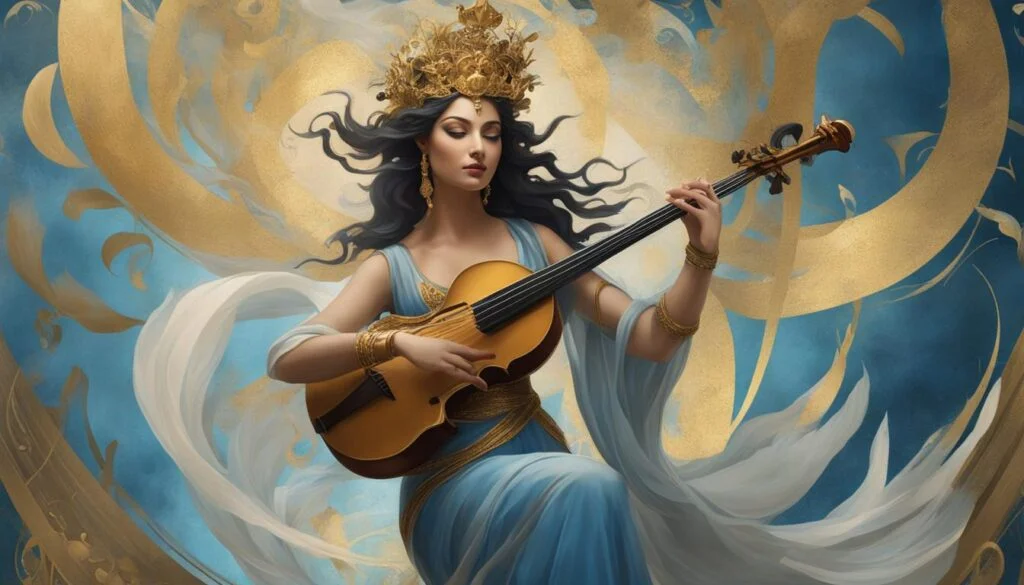
Polyhymnia’s influential presence in Greek mythology is prominently showcased in the works of renowned classical authors. These literary masters, including Hesiod, Pseudo-Apollodorus, and Ovid, provide valuable references to Polyhymnia, emphasizing her lineage and role as one of the muses.
Through their writings, we gain a deeper appreciation for Polyhymnia’s impact on various artistic domains and her enduring influence in Greek culture. These classical references highlight the profound significance of Polyhymnia as one of the Greek mythology muses, further solidifying her place in the pantheon of ancient deities.
Let’s explore some of these renowned works to unravel the captivating presence of Polyhymnia in classical literature.
Theogony by Hesiod
Hesiod’s Theogony offers valuable insights into the Greek pantheon of gods and goddesses, shedding light on their origins and roles. Within this epic poem, Hesiod mentions Polyhymnia as one of the muses, elevating her status alongside her fellow sisters. The Theogony provides a foundation for understanding the awe-inspiring attributes and significance of Polyhymnia in Greek mythology.
Library of Greek Mythology by Pseudo-Apollodorus
Pseudo-Apollodorus, in his celebrated work, the Library of Greek Mythology, presents a compendium of myths and legends. Within these pages, Pseudo-Apollodorus recognizes Polyhymnia as one of the nine muses, emphasizing her connection to the realms of music, poetry, and dance. His references to Polyhymnia further enhance our understanding and appreciation of her vital role in inspiring creativity.
Metamorphoses by Ovid
Ovid’s Metamorphoses, a renowned narrative poem, delves into various mythological tales, often weaving together celestial and earthly realms. Throughout this poetic masterpiece, Ovid makes mention of Polyhymnia as one of the muses, illustrating her divine influence on artistic endeavors. His vivid storytelling paints a vibrant picture of Polyhymnia’s presence, immortalizing her within the tapestry of ancient Greek culture.
These references in classical literature undoubtedly affirm the indelible mark left by Polyhymnia in Greek culture and mythology. Exploring these works provides us with a profound understanding of her role as one of the muses and her far-reaching impact on various artistic domains.
The Enigmatic Appearance of Polyhymnia
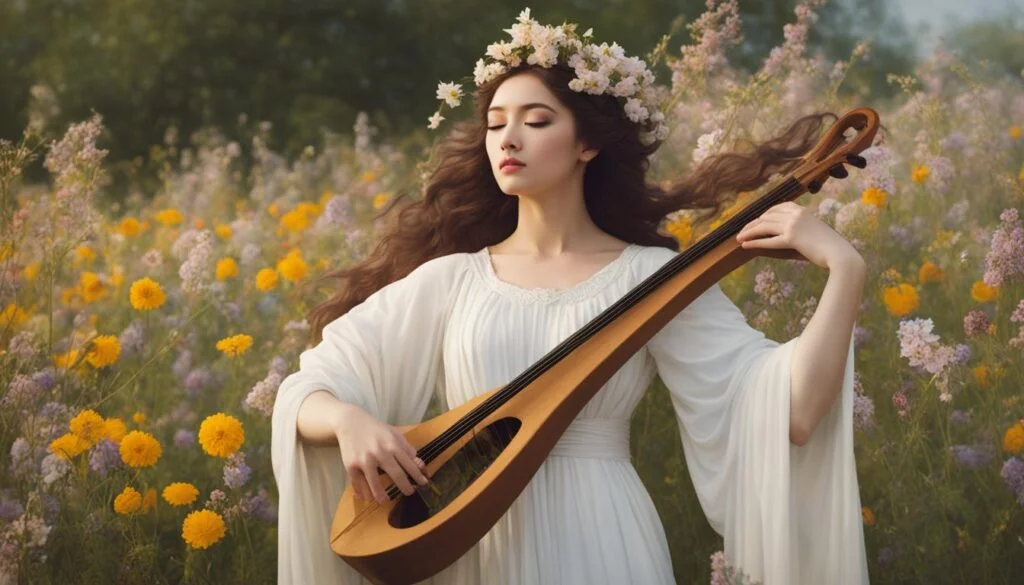
Polyhymnia, one of the revered Greek Muses, captivates with her enigmatic aura. She is often depicted with a serious and contemplative figure, drawing us into her world of deep thought and inspiration. Wrapped in an air of mystery, Polyhymnia’s attire further enhances her enigmatic persona. Adorned in a delicate veil and draped in a flowing cloak, she embodies the profound depths of wisdom and creativity that reside within the realm of the muses.
Unveiling the Veil
The veil that adorns Polyhymnia symbolizes the hidden truths and secrets preserved within the artistic realm. It represents the transcendence of the mundane, allowing artists to connect with a higher consciousness and channel their creativity from divine sources. As she peers through the veil, Polyhymnia beckons us to explore the unseen and delve into the depths of our own imagination.
A Cloak of Mystery
The long cloak worn by Polyhymnia further adds to her mystical allure. Its flowing folds conceal the infinite possibilities and boundless inspiration that await those who seek to unlock the mysteries of artistic creation. Like an ancient oracle cloaked in divine wisdom, Polyhymnia invites us to embrace the unknown and embrace the transformative power of artistic expression.
With every brushstroke or cadence, the enigmatic presence of Polyhymnia resonates, inspiring artists to reach beyond their limitations and tap into the ethereal wellspring of imagination. Her distinctive appearance not only symbolizes the depths of her own wisdom but serves as a constant reminder of the limitless potential within each of us. In the world of Greek mythology and beyond, Polyhymnia continues to be a muse whose enigmatic persona inspires generations of artists in their pursuit of creativity and self-discovery.
Polyhymnia’s Divine Attributes and Powers
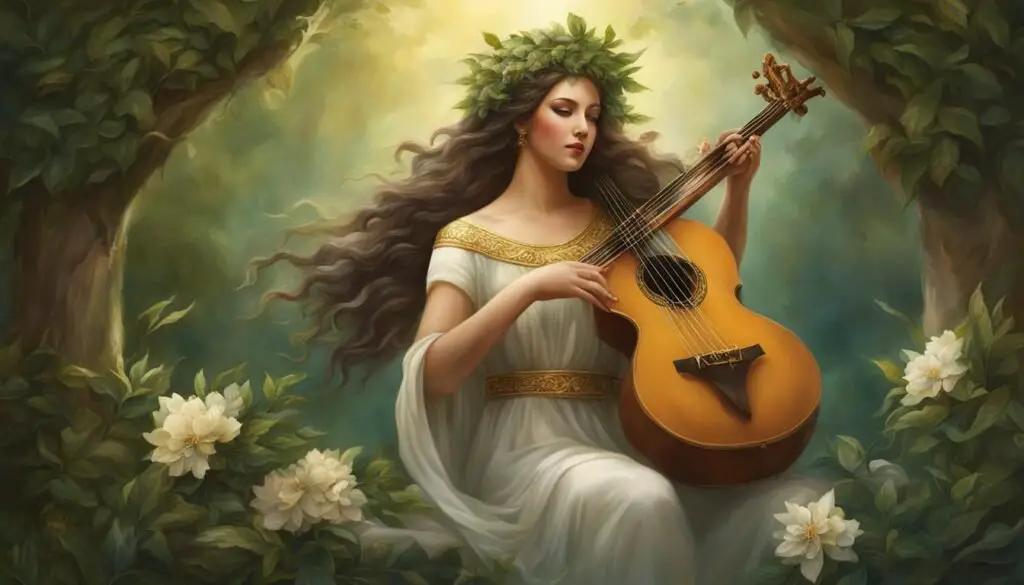
Polyhymnia, one of the muses in Greek mythology, possesses divine attributes and powers that contribute to her significance in the realm of artistic inspiration and guidance.
As a muse, Polyhymnia is believed to be involved in divine inspiration and prophecy. She actively participates in prayers and rituals, bestowing her followers with divine wisdom and guidance. Her divine essence permeates the creative process, infusing it with a transcendent quality.
Polyhymnia’s powers extend beyond mere inspiration. Alongside her fellow muses, she possesses the ability to heal and transform. This power is exemplified in the mythological accounts of the Pierides, who challenged the muses to a singing contest and were subsequently transformed into magpies as punishment.
Through her divine attributes and powers, Polyhymnia plays a significant role in shaping and inspiring artistic endeavors. Her influence extends beyond the creative sphere, permeating the cultural fabric of Greek society and solidifying her status as a muse in Greek culture.
With her divine presence and transformative abilities, Polyhymnia stands as a guiding force for artists and creators, offering insight, wisdom, and inspiration.
Conclusion
The Greek Muses, with their divine influence and creative prowess, hold a significant place in Greek mythology, culture, and symbolism. Among them, Polyhymnia emerges as a central figure, embodying the essence of inspiration and artistic expression. As the muse of religious hymns, lyrical poetry, dance, and music, Polyhymnia’s transformative power was revered by ancient Greeks.
Her portrayal in classical literature elevated her status, emphasizing her lineage, and immortalizing her influence on various artistic domains. Depicted with an enigmatic and meditative demeanor, Polyhymnia’s appearance captivated the imagination, reflecting the depths of creative thought and wisdom. Her distinct attire further emphasized her mystical aura.
The muse’s divine attributes and powers, encompassing prophecy, healing, and transformation, attest to her significant role as a source of inspiration and guidance. The Greek Muses, including Polyhymnia, continue to symbolize inspiration and creativity, leaving an indelible mark on ancient Greek culture. Their enduring legacy serves as a reminder of the profound impact of artistic expression and the eternal quest for divine inspiration in human civilization.
FAQ
What is a muse in Greek mythology?
In Greek mythology, the muses were divine beings who inspired creativity and the arts. They were believed to possess divine inspiration and prophetic abilities.
Who were the Greek muses?
The Greek muses were a group of nine goddesses who represented different artistic disciplines and inspired artists in their respective fields.
What is the role of a muse in Greek culture?
The muses played a significant role in various creative aspects, including guiding the creation of artistic expressions, inspiring generations of artists, and embodying the transformative power of inspiration.
What are the names of the Greek goddess muses?
The names of the Greek goddess muses are Calliope, Clio, Erato, Euterpe, Melpomene, Polyhymnia, Terpsichore, Thalia, and Urania.
Who is Polyhymnia in Greek mythology?
Polyhymnia is one of the Greek muses and is the muse of religious hymns, lyrical poetry, dance, and music. She is the daughter of Zeus and Mnemosyne.
What was Polyhymnia’s role in Greek culture?
Polyhymnia played a pivotal role as the muse of religious hymns, guiding and inspiring hymn writers, as well as inspiring poets, dancers, and musicians in their artistic endeavors.
Are there references to Polyhymnia in classical literature?
Yes, renowned classical authors such as Hesiod, Pseudo-Apollodorus, and Ovid mention Polyhymnia’s lineage and her role as one of the muses in their literary works.
What is the significance of Polyhymnia’s appearance?
Polyhymnia is often depicted with a serious and meditative figure, wearing a veil and long cloak. Her appearance enhances her enigmatic persona, representing the depths of inspiration and wisdom that reside within the realm of the muses.
What divine attributes and powers does Polyhymnia possess?
Polyhymnia possesses divine attributes and powers, including involvement in divine inspiration and prophecy, participation in prayers and rituals, bestowing followers with divine wisdom and guidance, and healing abilities.
What is the legacy of the muses and Polyhymnia in Greek culture?
The muses, including Polyhymnia, continue to be symbols of inspiration and creativity, leaving a lasting legacy in the realm of artistic expression in Greek culture.



